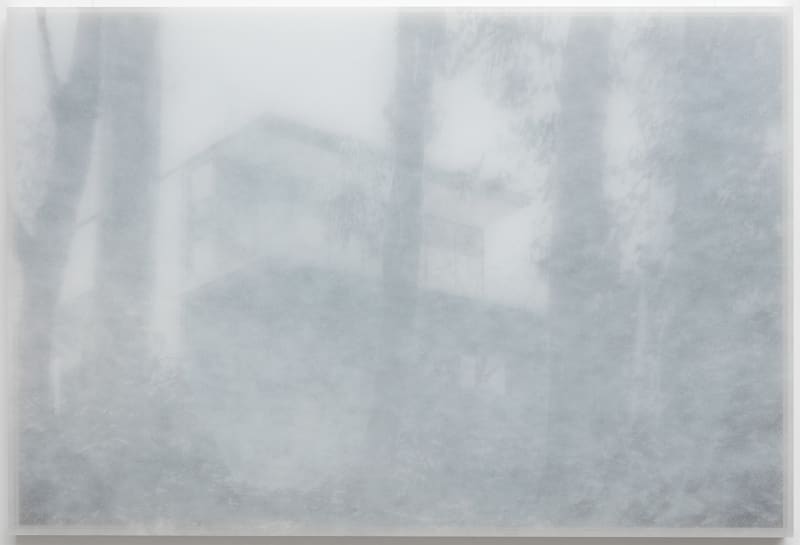The Artist Constructing Modernist Ruins in a Gallery Garden
For his enchanting new installation at London's Victoria Miro Gallery, opening this weekend, artist Alex Hartley has built what appears to be a dilapidated house in the middle of its waterside garden. By Billie Muraben
In a garden facing onto, and somewhat consumed by, a basin of London’s Regent’s Canal sits the cavernous ruin of a modernist home. The ruin is, in fact, a fiction – one constructed by artist Alex Hartley for the exhibition After You Left at Victoria Miro’s east London gallery. Built to resemble European modernism’s International Style, and California’s later iterations of the tradition, A Gentle Collapsing II transforms the gallery’s waterside garden into a scene of thriving wild ferns and material decay.
A sort-of a folly, the piece performs as an homage to utopian ideals. It seems to have been vacated without explanation, and carries an atmosphere of activity – both in terms of the traces of its absent owner, and the growth of trees, moss and supposed mould around and within what remains. The walls were planned and built up according to Hartley’s impression of what the minimum requirement would be for the structure to be understood as a Modernist home. The open stairs, metal-grated horizontal window and cut section of low-hanging roof were shaped and finished – with painted on black mould – to give the impression of an accelerated process of ageing, and the accelerated progress of time.
A Gentle Collapsing II breaks boundaries between interior and exterior, public and private, natural and manmade, all of which are themes that continue in the interior spaces of the exhibition. “It’s the battle of architecture sinking back into nature that I find interesting”, says Hartley. “The work has already changed so much with the seasons, and when the leaves entirely fall it’ll have a much more direct relationship with the surrounding architecture. This is the second iteration of A Gentle Collapsing and they do take time, both in terms of considering what works in the space and how they adapt and grow once installed.”


